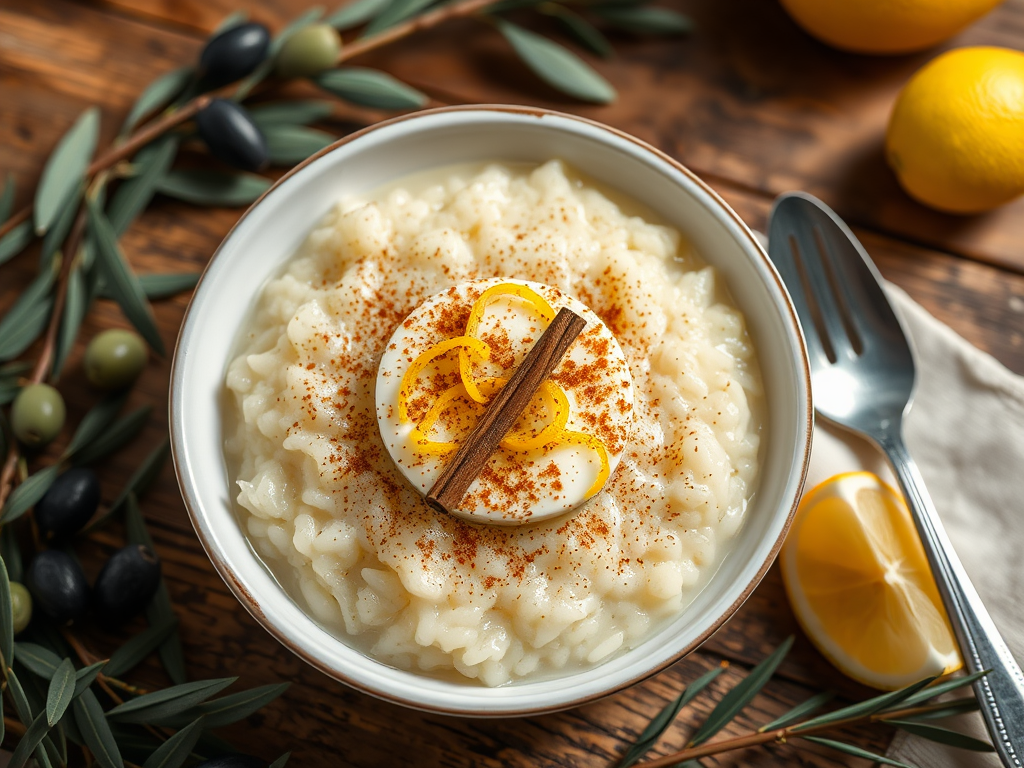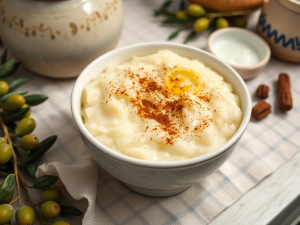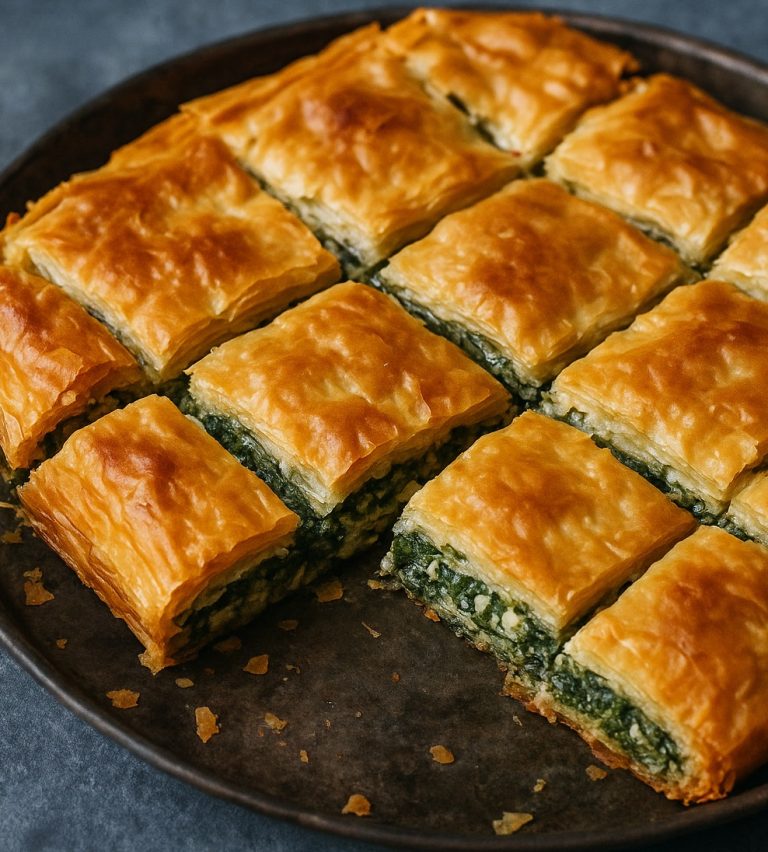
Greek rice pudding, known as rizogalo, is a cherished dessert that embodies the flavors and culinary traditions of Greece. Creamy, fragrant, and often garnished with cinnamon, this delightful treat has a history as rich as its taste. Let’s delve into the origins, preparation, variations, and cultural significance of this beloved dish.
A Brief History
Rizogalo has roots that can be traced back to ancient Greece, where rice was introduced as a staple ingredient. The Greeks were known for their innovative use of ingredients, often combining them in ways that created nourishing and flavorful dishes. Rice, a relatively new ingredient at the time, was embraced for its versatility and ability to absorb flavors.
Over the centuries, rizogalo evolved, influenced by various cultures, including the Arab and Ottoman empires. During the Ottoman rule, rice became a prominent ingredient in many Greek dishes, and the art of making rice pudding flourished. Today, rizogalo is a popular dessert served in homes and is often found in Greek tavernas and restaurants, evoking a sense of nostalgia and comfort.
Key Ingredients
The simplicity of rizogalo is one of its appeals. The basic ingredients include:
- Rice: Short-grain rice, such as Arborio or Calrose, is commonly used for its creamy texture. The starch released during cooking helps achieve the dish’s characteristic creaminess.
- Milk: Whole milk is preferred for its richness, but variations can include evaporated or condensed milk for added sweetness and creaminess.
- Sugar: This sweetens the pudding, with the amount adjusted to personal taste. Some recipes use honey for a more traditional flavor.
- Cinnamon: Ground cinnamon is often used for flavoring, while a cinnamon stick may be added during cooking for an aromatic touch.
- Vanilla: A splash of vanilla extract enhances the overall flavor, complementing the sweetness of the pudding.
Traditional Recipe for Rizogalo
Here’s a classic recipe to make Greek rice pudding at home:
Ingredients
- 1 cup short-grain rice
- 4 cups whole milk
- 1/2 cup sugar (adjust to taste)
- 1 teaspoon vanilla extract
- 1/4 teaspoon salt
- 1 cinnamon stick (optional)
- Ground cinnamon for garnish
- Lemon zest (optional, for a refreshing twist)

Instructions
- Prepare the Rice: Rinse the rice under cold water until the water runs clear. This helps remove excess starch, preventing the pudding from becoming too gummy.
- Cook the Rice: In a medium saucepan, combine the rice and 2 cups of water. Bring to a boil, then reduce the heat and simmer until the water is absorbed (about 15 minutes). This initial cooking step ensures that the rice is tender before adding the milk.
- Add Milk and Flavorings: Stir in the milk, sugar, salt, and the cinnamon stick if using. Cook over medium heat, stirring frequently, until the mixture thickens (about 20-30 minutes). The pudding should have a creamy consistency and the rice should be fully cooked. Remove the cinnamon stick before serving.
- Serve: Transfer the pudding to serving bowls. Allow it to cool slightly, then chill in the refrigerator or serve warm. Garnish with a sprinkle of ground cinnamon before enjoying. For an extra touch, consider adding a twist of lemon zest for brightness.
Variations
While the classic rizogalo is beloved, there are several delightful variations that add unique flavors and textures:
- Lemon Rizogalo: Adding lemon zest or a splash of lemon juice gives a refreshing twist to the traditional recipe, balancing the sweetness with a hint of acidity.
- Nutty Rizogalo: Incorporate chopped almonds, walnuts, or pistachios for added texture and flavor. Nuts can be toasted for an extra depth of flavor.
- Chocolate Rizogalo: For chocolate lovers, dissolve cocoa powder in the milk for a rich, chocolatey version. This variation can be garnished with chocolate shavings or whipped cream.
- Coconut Rizogalo: Substitute a portion of the milk with coconut milk for a tropical flair. This variation can also include shredded coconut for added texture.
Cultural Significance
In Greece, rizogalo is often served during festive occasions and celebrations. It is a dessert that brings families together, enjoyed at gatherings, religious holidays, and special events. The dish is not only a treat but also a way to connect with cultural heritage.
In Greek culture, food is a vital part of hospitality, and serving rizogalo to guests is a gesture of warmth and welcome. It is also a popular choice for festive tables, especially during Christmas and Easter, when families come together to celebrate.
Nutritional Benefits
While rizogalo is a sweet indulgence, it can also provide nutritional benefits. The use of milk offers a good source of calcium and protein, essential for bone health. The rice serves as a source of carbohydrates, providing energy. When incorporating nuts or fruits, the pudding can also supply healthy fats and vitamins.
For those looking to make healthier choices, there are ways to modify the recipe. Using low-fat milk or reducing the sugar content can create a lighter version without sacrificing flavor.
Conclusion
Greek rice pudding, or rizogalo, is a delightful blend of simplicity, tradition, and cultural significance. Its creamy texture, fragrant spices, and sweet flavor make it a comforting dessert cherished by many. Whether served warm or chilled, rizogalo is a sweet reminder of Greece’s rich culinary history and the importance of family and hospitality.
So, the next time you crave something sweet and soothing, consider whipping up a batch of rizogalo. Not only will you enjoy its exquisite taste, but you will also be partaking in a culinary tradition that has stood the test of time.



